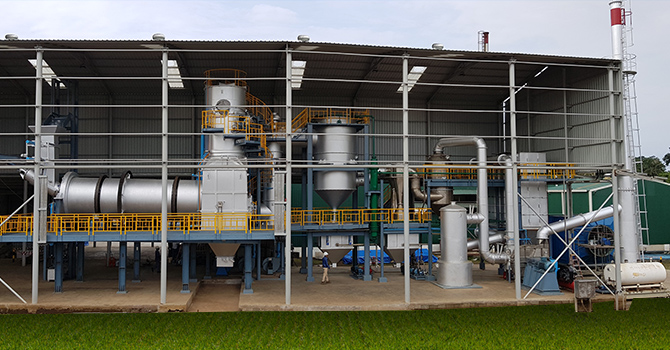Suitable for the Hazardous area classifications Zone1, Zone2, Gas Group IIA, IIB, IIC.
Hazardous waste means any liquid, gaseous, solid, or waste substance, or a combination thereof, resulting from any process of industry, manufacturing, or business or from the development or recovery of any natural resources that may cause or might reasonably be expected to cause pollution. Hazardous wastes consist of complex mixtures of a large variety of compounds. Its Discarding/incineration needs careful and thorough analysis for safe disposal.
INCINERATOR
Waste management has become a major concern worldwide, and incineration is now being increasingly used to treat waste that cannot be economically recycled or treated. Incineration is a waste treatment technology that involves the combustion of organic materials. Incineration of waste materials converts waste into Incinerator bottom ash, flue gas, particulates, and heat. The flue gases are cleaned before dispersing in the atmosphere.
Maximus Envirotech offers incineration solutions for a wide range of waste. Our wide experience & exhaustive analysis of the problems helps in providing the right type of solutions for different types of waste. Our incinerators are state-of-the-art units specially designed considering the physical & chemical properties of wastes. Our incinerators are operated by PLC controlled system to ensure failsafe and error-free operation.

PRIMARY FURNACE
The waste is charged into this chamber through special waste feeding systems to ensure no exposure of people working near the furnace. The waste is incinerated in this furnace in oxygen-rich atmosphere. In this furnace, waste is decomposed into volatile gases and carbonaceous material. The furnace is maintained under negative draft, and the low velocity of gases helps in minimizing the carryover of particulate matter. The furnace temperature is closely controlled between 850 Deg C & 900 Deg C using the Auto operation of Burner. The ashes are removed from the furnace after the operation from Ash Door.
SECONDARY FURNACE
The flue gases coming from the primary furnace containing volatiles & unburnt carbonaceous material is burnt in a secondary furnace in turbulent conditions. Complete oxidation of the flue gases is ensured by maintaining a temperature above 1000 Deg C & supply of additional Air. A proper residence time is ensured for complete destruction of all volatiles.
SALIENT FEATURES
- Incineration system Built-in with 100% compliance to the requirement of Environmental rules of India as well as International Norms.
- Incineration system with two distinct furnaces, i.e., primary furnace & secondary furnace with the independent burner system.
- Online monitoring system for monitoring different parameters in flue gases like CO, CO2, HCl, NOx, SO2, and many more as per the requirement.
- Automatic Feeding of Solid & Liquid Waste into the primary Furnace.
- Operates on a variety of Auxiliary Fuels like Furnace Oil, LDO, HSD, Natural Gas.
- Automatic function operation using PLC and SCADA system for optimum operation.
- Heat Recovery systems for utilization of waste heat from flue gases.
SAFETY INTERLOCKS
- Automatic On/OFF of Fuel Burners corresponding to Low & High Temperature of Furnace.
- Automatic shutdown of the entire system in case of tripping of ID fan or Recirculation Pump.
- No Waste loading unless the temperature of Primary & secondary Furnace reaches desired temperatures.
- Real-time temperature logs and recording of alarms and other incidences to know the exact mode of operation.
- Venting of Exhaust gases from primary & secondary furnaces in case of power failures or emergency shutdowns to prevent any accident or damage to the system.
This content was originally published on the MEPL website.

